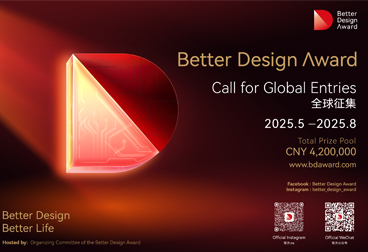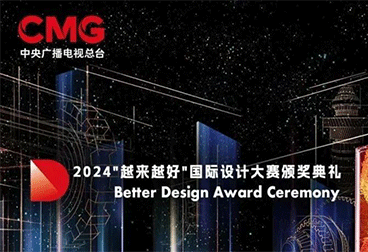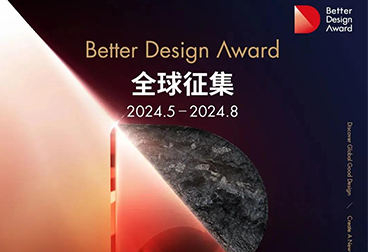Window to Southern Guangdong | Chinese Design in Focus! Raising the “Smile Curve” of “Better and Better”
On the evening of January 15, the 2024 Better Design Award Ceremony was broadcast simultaneously on the CCTV Video App and CCTV Finance Channel. This marked the first time a national media outlet aired an awards ceremony for a design competition. On the dazzling stage, the light of design shone even brighter.


The source of this light comes from Guangdong, the place of rising tides in southern China.
Benchmarking against World-Class Events. In May of last year, the Better Design Award was launched in Guangzhou, opening a window to global design excellence and attracting 7,183 outstanding works from 52 countries and regions around the world. This showcases the competition’s broad international perspective for selecting designs.
Showcasing Chinese Design Philosophy. The Better Design Award assembled a high-level judging panel, consisting of international design masters, top academic authorities, industry policy experts, and leading figures in the field. Together, they established evaluation standards aligned with the needs of high-quality development. This represents the confident Chinese discourse system behind the competition.
After three rigorous rounds of evaluation, 36 designs emerged as finalists, with 9 designs taking home the grand awards.
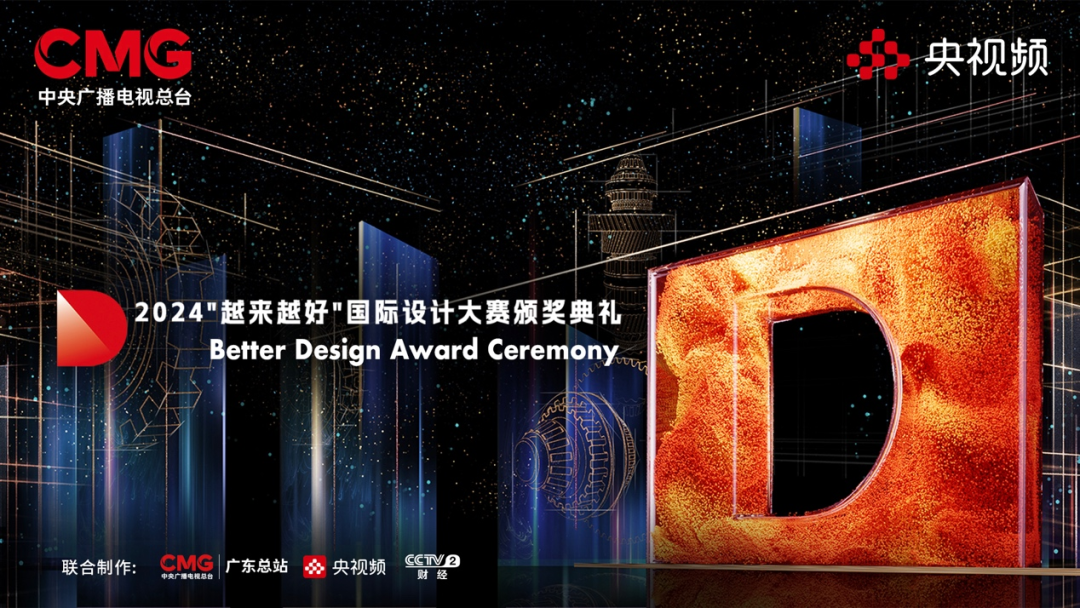
How Brilliant and Extraordinary?
The “Opening” Moment of Chinese Design
The day before the awards ceremony, Brazilian designer Bruno arrived in Shenzhen for the first time. He was thrilled by the award notification from the Better Design Award (BDA).
“I designed the Loop Bench for public spaces. It uses only steel, which is very eco-friendly. By folding flat steel into a three-dimensional structure, it combines art and concept. I hope to convey the idea of low-carbon circular sustainability through it. I’m very happy that we share this common value,” Bruno said.

In addition to sustainability, “human-centered” design is also the “universal language” of the design world. The translation device, which can be picked up and put down for easy use, and the visualized medical communication system that turns medical images into intuitive 3D models, both embody this principle effectively.
“I often tell my students that the word ‘design’ has a ‘speech’ radical, which means it is essentially about meeting people’s needs. Our designs should always be filled with emotion and warmth,” said Cao Xue, the designer of Bing Dwen Dwen and BDA juror, who paid special attention to human-computer interaction during the review process.
Bruno’s excitement grew even further as he entered the ceremony venue and was enveloped by a 180-degree immersive stage. “I have attended many design award ceremonies in various countries, but this one is different. It is incredibly beautiful and breathtaking!” he exclaimed.

A giant screen nearly 100 meters long transformed the venue at the Qianhai International Conference Center into a grand design scroll. On the stage, exquisite award-winning designs leaped from sketches into reality, receiving glowing moments during the remarks of prestigious award presenters. In the audience, every viewer was immersed, directly experiencing the designers’ ingenuity. Dance performers and robotic arms interacted with the audience, expressing the “human-centered” philosophy and aspirations of design.
“This is not a typical competition award ceremony. We have always insisted on integrating thought + art + technology to explore new ways of communication, creating a high-quality program that embodies the spirit and stature of the China Media Group. It serves as a window to promote Chinese design ideas and explain Chinese design values, aiming to create an international design competition on par with the Red Dot Award, the iF Design Award, and other prestigious global competitions. This is our original aspiration,” said Xiao Zhensheng, Secretary of the Party Committee of the China Media Group Guangdong Headquarters.
Historically, the voice of the design world has largely remained within a few industrially advanced countries in Europe and America, such as the British Arts and Crafts Movement that pioneered modern design in the late 19th century, the German Bauhaus style of the 1920s, and the rise of Nordic modern design after the 1950s. These movements pushed forward the mature development of the global industrial design industry and market, and led to the creation of the major international design competitions that exist today. As the world’s largest industrial nation, China’s manufacturing sector continues to transition toward high-quality development, making the “opening” moment for Chinese design long overdue!
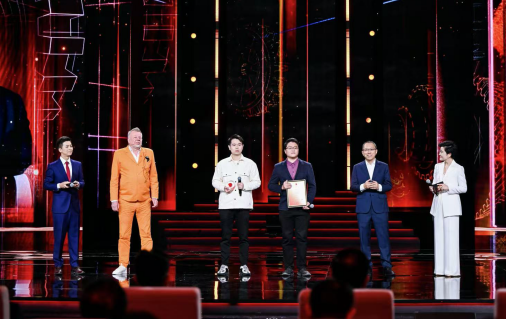
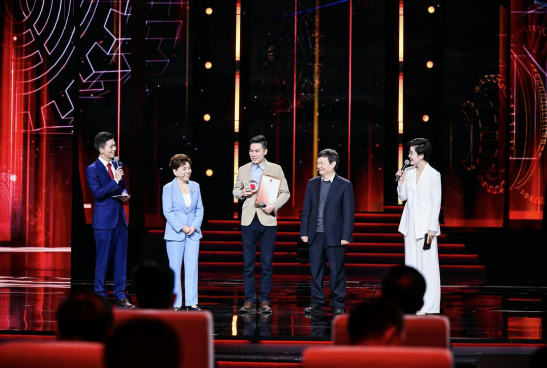
In 2024, China became the global leader in the production and sales of new energy vehicles (NEVs). The ultra-large screen cockpit with fewer buttons and more interactive features has become a common feature of Chinese NEVs. At the inaugural Better Design Award (BDA), many NEVs made their debut. The award-winning design was a car infotainment system that took three years to develop. The design team drew inspiration from the traditional folding fan, allowing users to slide and reveal three layers of interfaces in one motion, balancing interaction and control.
"‘Human-centered’ design must evolve with the times. Many traditional European and American cars have large buttons, which may have suited the usage habits of their time. But Chinese NEVs are born in the era of mobile internet, so domestic brands look very different. This is the unique automotive design culture and design language of China, and we have already gained market recognition," explained designer Wang Ying.
“I can say that Chinese NEVs are more fun and enjoyable than traditional brand cars. The latter may have good quality, but I believe life should be enjoyed. Life should have love,” said Finnish juror Jarmo Suominen, could not hide his admiration.
Compared to Bruno’s excitement, Chinese designers who stood on the awards ceremony stage felt a sense of pride. Some had, through hundreds of experiments, discovered the anti-corrosion techniques for large mining machines used in potassium salt mines, filling a gap in this field for domestic equipment. Others had drawn inspiration from the ancient Chinese Xuanyuan chariot to propose a standing cockpit design for China’s crewed lunar rover. Some had designed mechanical arms with ten degrees of freedom to provide maintenance and technical support for the "artificial sun" nuclear fusion device.
While design competitions such as the Red Dot Award and iF Design Award tend to focus more on consumer products like electronics, furniture, and transportation, the Better Design Award deliberately seeks to discover great national projects that seamlessly integrate advanced technology with exquisite design.

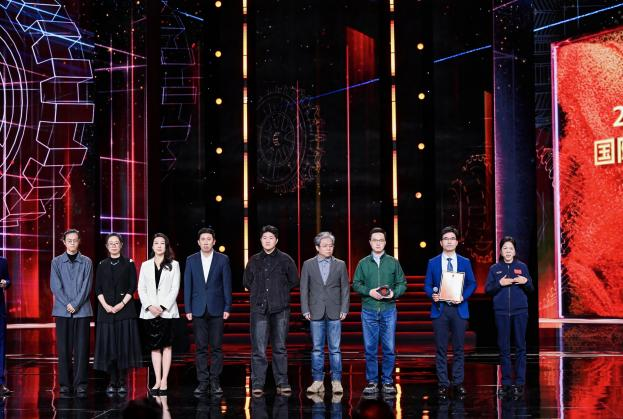
“Our design must also align with the 'Four Directions' promoted by our country: facing the world’s cutting-edge technology, facing the main battlefield of the economy, facing the nation’s major needs, and facing the health and lives of the people. This is China’s proactive approach to responding to the nation’s major needs, and it’s also what makes the Better Design Award (BDA) more forward-thinking,” explained Wang Yunhui, the Deputy Director of the Fifth Research Institute of the Ministry of Industry and Information Technology and a BDA juror.
Why is the Pearl River Rising?
The Mission of a Manufacturing Powerhouse
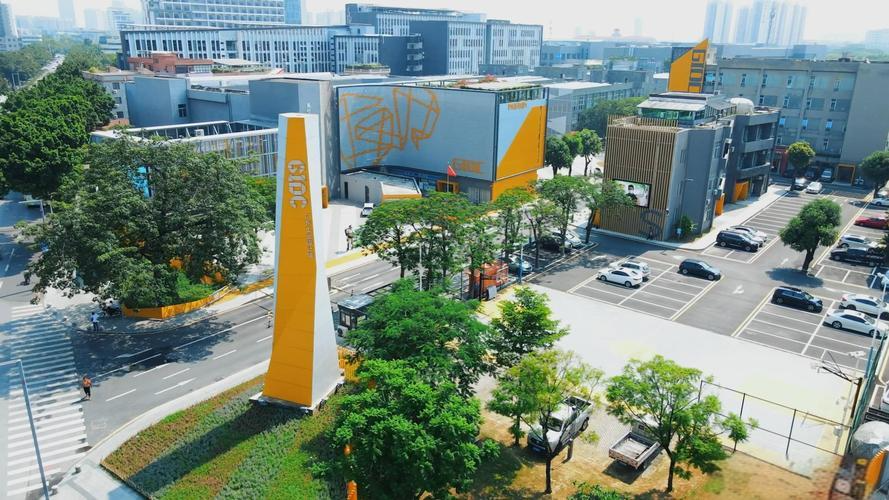
△ Guangdong Industrial Design City has already gathered nearly 9,000 design professionals.
Technology of Guangdong Province released a set of data: By December 2024, there were nearly 10,000 industrial design enterprises and organizations in Guangdong; the industrial design industry’s revenue exceeded 40 billion RMB, and the value of design achievements exceeded 4 trillion RMB. Of the 415 national-level industrial design centers recognized by the Ministry of Industry and Information Technology, 47 are located in Guangdong.
These figures clearly indicate that Guangdong’s industrial design has not only become a key force in driving the province’s high-quality manufacturing development, significantly enhancing the market competitiveness and added value of products, but it also holds a significant position in the national industrial design field.
Looking at the grand prize list of the 2024 Better Design Award, three of the nine grand prize-winning works come from Guangdong. These include a pneumatic road bicycle made with new materials for ultra-lightweight design, a fixed-wing drone soaring in the vast prospects of the low-altitude economy, and an ultrasonic diagnostic system that greatly improves accuracy through artificial intelligence algorithms. All of these are outstanding examples that have thrived within Guangdong’s 20 strategic industrial clusters.
Many other award-winning works come from excellent design teams across China and around the world. “The Better Design Award originated from the 'Governor’s Cup' Industrial Design Competition. The reason we upgraded it to a global event is to discover good designs worldwide and use a higher platform to lead the high-quality development of the manufacturing industry, fulfilling the mission of Guangdong as a major manufacturing province,” recalled Tu Gaokun, Director of the Guangdong Provincial Department of Industry and Information Technology, during the inception of the competition.
“This competition has garnered wide attention in the global design community, providing a platform for designers from all over the world to showcase their talents and exchange ideas. It has achieved the goal of 'discovering global good design and leading new ways of beautiful living,'" said Srini Srinivasan, Senator & Former President of World Design Organization, who was also a Recommender for this year’s competition, at the awards ceremony.

Why "Better and Better"?
Building Conversion Advantages on the Foundation of Technological Innovation
Today, breakthroughs in new technologies are rapidly changing people's lives. Just two years ago, people were first introduced to AICG, and now, AI large models have transformed industries across the board.
You might think this is expected, but in reality, it is not.
Electric current was first discovered in 1780, but it wasn’t until a century later that Edison’s carbon filament light bulb truly illuminated people's lives. In between, countless individuals explored how new technologies could be converted into new products and gain true market recognition.
This is the pain of conversion.
As the largest economy and manufacturing hub in China, Guangdong enjoys unique technological innovation resources and a strong capability for the conversion of results.
"Guangdong has a complete industrial system and a highly developed technological innovation industry. The variety of industries here provides designers with abundant sources of inspiration and practical scenarios, allowing design works to be more closely aligned with market demands and to have greater practical value. At the same time, the highly developed technological innovation environment also provides strong technical support and driving force for design innovation," said Mei Xiangyi, Secretary-General of the Guangzhou Industrial Design Association.
Two months ago, the "Opinions of the Guangdong Provincial Committee of the Communist Party of China and the People's Government of Guangdong Province on Deepening the Implementation of the Innovation-Driven Development Strategy and Accelerating the Construction of the Full-Process Innovation Chain" was publicly released. It proposed accelerating the construction of a full-process innovation chain, promoting high-level technological self-reliance, and creating an important position for the development of new productive forces.
From man-made satellites that can reach the outer space to inspection robots that can explore the five oceans, to cutting-edge AI chips, smart driving, and drone technologies… Guangdong today is constantly coordinating and upgrading traditional industries, expanding emerging industries, and nurturing future industries. This allows one research and development achievement after another to quickly be transformed into practical applications, driving the commercialization and industrialization of technological achievements.
"Design today is no longer confined to the surface appearance nor solely focused on user experience. It is more concerned with how to organically combine the most advanced technologies and cutting-edge materials with innovative results to bring people new, leapfrog development value experiences, even creating new 'species' through design," said Professor Liu Guanzhong of Tsinghua University. He hopes that Guangdong, this vibrant land, can enable more great designs to become the bridge connecting new technologies with new products, turning the pain of conversion into a smooth pathway.
Today, although the 2024 Better Design Award (BDA) has concluded, a series of design-driven industry matchmaking events, design innovation talent training, and design supply-demand matchmaking meetings are still underway. These initiatives aim to promote the implementation and root of excellent design results in Guangdong; organize face-to-face exchanges between top design organizations from the competition and demand-side enterprises, and facilitate better design empowerment for the high-quality development of the upstream and downstream industry chain.
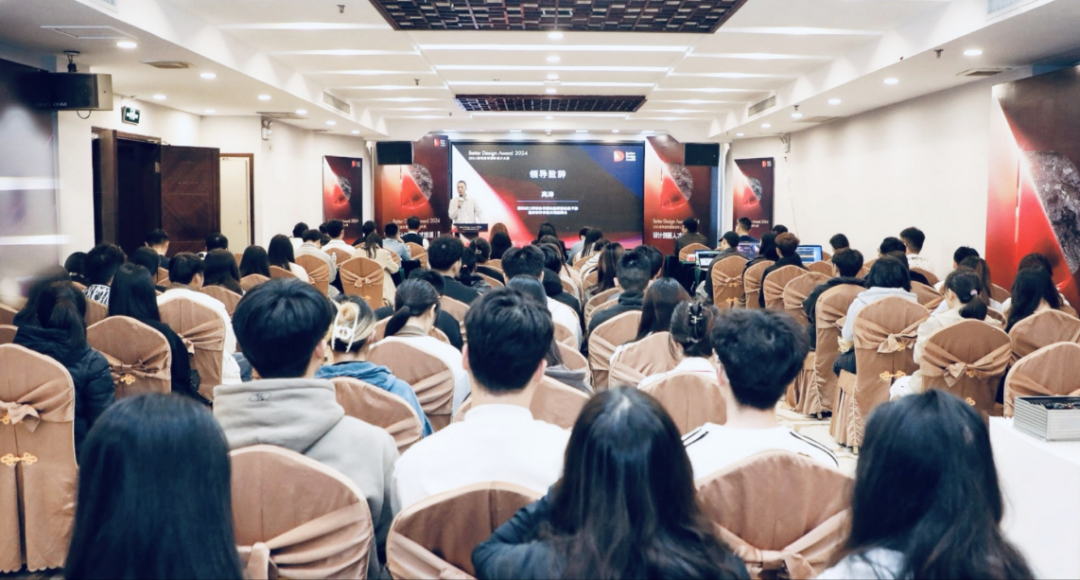
△ Better Design Award (BDA) Industry Matching Conference - Chaozhou
“This year, we’ve been to many places—London, New York, Milan, Shanghai, Hong Kong… Just like the vision of the Better Design Award—better design, a better future—we hope to use the light of design to illuminate a better Greater Bay Area, a better China, and a better world,” said Shirley Feng, Co-President of the Organizing Committee of the 2024 Better Design Award.
Forty years ago, industrial design as a professional major had not yet been established in China; forty years later, we can now proudly speak on the international stage, telling the story of China’s design language and conveying China’s design philosophy.
This progress is thanks to millions of designers, generation after generation, who have taken the prosperity of the motherland and nation as their mission. Through continuous exploration and practice, they have finally opened the door to independent innovation in industrial design. It is also thanks to China's rapid advances in scientific research and innovation, and its increasingly thorough industrial system, which has enabled the deep integration of advanced design and manufacturing, driving each other’s development.
At the end of the awards ceremony, the BDA Juror President, He Renke, led the Chinese and international award winners onto the stage to declare the 2024 Better Design Award designer’s manifesto—We co-create the future of design. We will continue to lead the world’s pace of innovation, sharing with the world “China Speed,” “China Quality,” and “China Design!”
A better future is on the way!
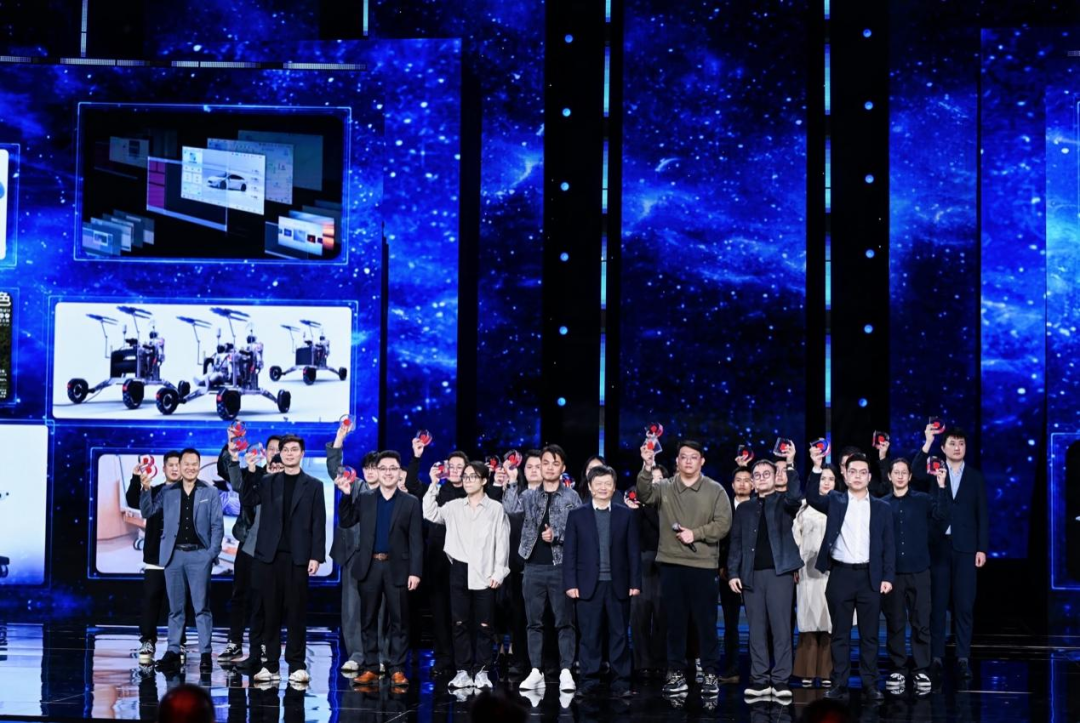
Hosted by:
Organizing Committee of the Better Design AwardPartner Institutions:
Central Academy of Fine Arts, Academy of Arts & Design,Tsinghua University, Tongji University, Guangdong University of Technology,Guangzhou Academy of Fine Arts, Shenzhen University,Shenzhen Technology University, World Design Organization,World Green Design Organization, Hong Kong Design Centre,Hong Kong Federation of Design and Creative Industries,Hong Kong Designers Association, Macau Design Centre,Macau Product Designers Association, Guangdong University of Technology Huateng Private Equity Investment Fund, Design Capital of Guangzhou, andother institutions
